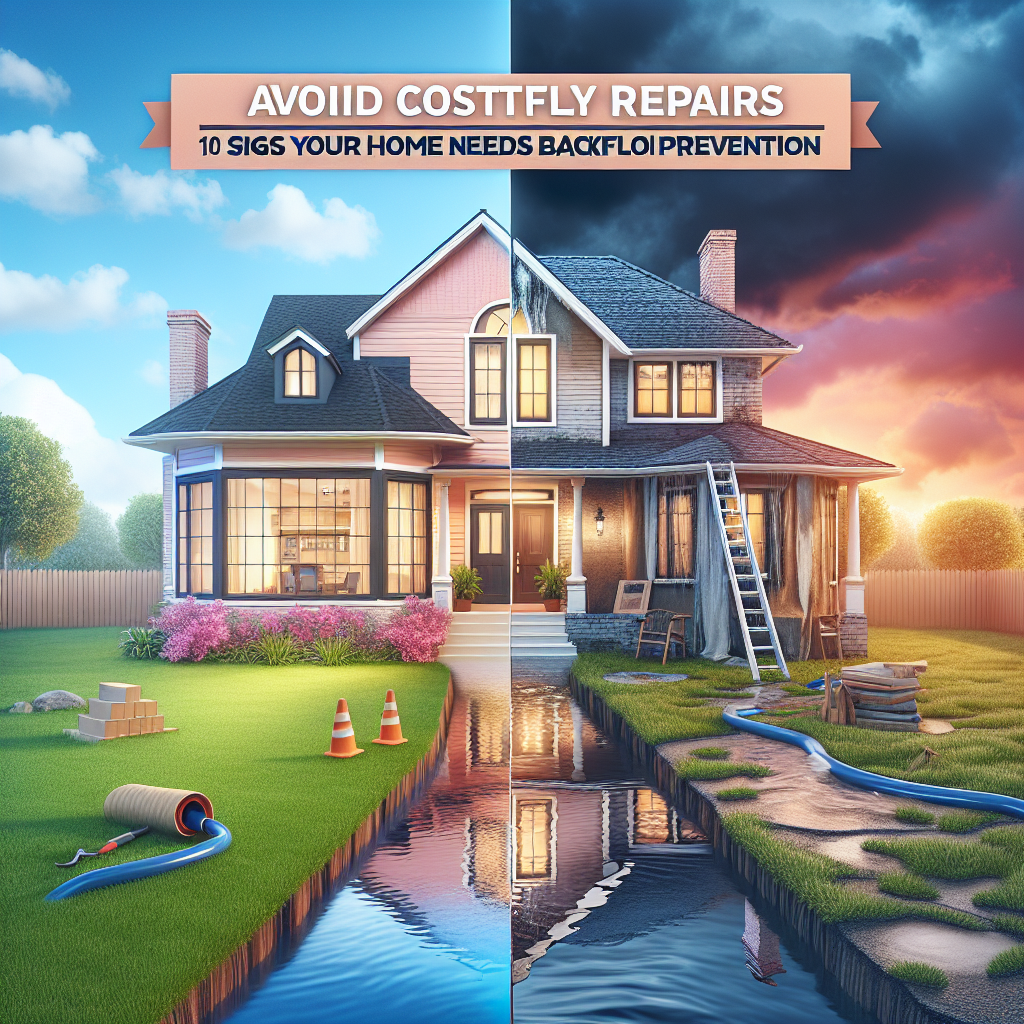As a homeowner, the safety and well-being of your family are of utmost importance. One critical but often overlooked aspect of home maintenance is backflow prevention. Backflow occurs when water flows in the wrong direction, potentially contaminating your drinking supply with harmful substances. Understanding the signs that indicate your home needs backflow prevention can save you from costly repairs and serious health risks. In this article, we’ll explore the red flags that may signify a backflow issue and recommend actions to protect your home.
What is Backflow, and Why Does It Matter?
Backflow is a plumbing phenomenon that occurs when the flow of water reverses direction, allowing contaminants to enter your clean water supply. This can happen due to various reasons, such as changes in water pressure or a cross-connection in your plumbing system. The health risks associated with backflow can range from minor illnesses to severe health problems, making backflow prevention systems an essential aspect of home safety.
1. Low Water Pressure
If you’ve noticed a sudden drop in water pressure throughout your home, this could be a sign of backflow issues. Low pressure may indicate that contaminated water is seeping into the main water supply, and immediate action should be taken to prevent health hazards and system damage.
2. Discolored Water
Have you noticed brown, yellow, or cloudy water coming from your taps? This discoloration can be a strong indicator that backflow is occurring. It may mean sediment, rust, or other impurities are mixing with your clean water supply, and you must address the situation immediately.
3. Strange Odors
Foul or unusual odors emanating from your faucets can be more than just an inconvenience; they can signal backflow issues. If your tap water smells like sewage or chemicals, it’s time to check your plumbing for any signs of backflow and seek professional help.
4. Recurring Plumbing Problems
Are you constantly dealing with plumbing issues such as clogs or slow drains? Frequent plumbing problems can be a symptom of backflow in your system. This is particularly true if you notice these issues in multiple fixtures throughout your home.
5. Presence of Backflow Prevention Device
If your home has existing backflow prevention equipment but it hasn’t been serviced or inspected recently, your system may not be functioning as intended. Regular maintenance of these devices is essential; without proper care, they may fail to protect your home from contamination.
6. Changes in Water Taste
If your water has suddenly developed a strange taste, it’s essential to investigate the cause. An unpleasant flavor might indicate that contaminants have penetrated your water supply, potentially due to backflow. Don’t hesitate to reach out to a plumber for an assessment.
7. Unexplained Algae Growth
Finding algae or moss growth in or around your plumbing fixtures can be alarming. This growth often requires moist conditions, commonly associated with backflow. If you observe these signs, it’s a great time to consider a backflow prevention system for your home.
8. Increased Utility Bills
Have your water bills suddenly spiked without explanation? This could be a sign of water leaking or flowing incorrectly. Contaminated and backflowing water may lead to unusual consumption patterns that inflate your water bills.
9. Water Standing in Yard
If you discover unusual pooling of water in your yard or around your home’s foundation, it could indicate a backflow issue. This standing water can be a breeding ground for pests and lead to structural damage if neglected; it’s essential to address this situation at once.
10. Local Regulations
Depending on where you live, there may be strict regulations about backflow prevention systems. If your municipality requires backflow prevention devices for certain types of plumbing systems, and your home doesn’t have one, it’s time to take action. Staying compliant not only ensures your safety but can also prevent costly fines.
How to Prevent Backflow Issues
If any of the signs mentioned above resonate with you, it might be time to consider investing in a backflow prevention system. Here are some steps to help you safeguard your home:
-
Consult a Professional: Engaging a licensed plumber who specializes in backflow prevention is the best first step. They can assess your current plumbing system and determine the need for a backflow device.
-
Regular Inspections: Schedule routine inspection and maintenance of your plumbing system, including existing backflow prevention devices, to ensure they are in good working condition.
-
Educate Yourself: Understanding the principles of backflow and the reasons behind it can empower you to spot potential issues before they escalate.
- Stay Updated on Local Codes: Compliance with local plumbing codes is not just a legal matter; it’s essential for your family’s safety. Stay informed about local regulations regarding backflow prevention.
Conclusion
Acknowledging the signs of backflow issues in your home not only protects your plumbing infrastructure but also ensures the health and safety of your family. Don’t wait until it’s too late; by being proactive, you can avoid costly repairs and keep your home safe from contamination. If you suspect backflow problems or want to install a prevention system, reach out to a trusted professional today. Your family’s health and safety are worth it!


